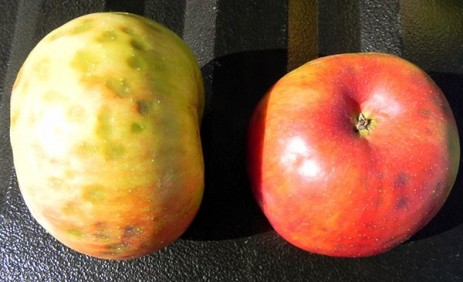Jul 29, 2020Penn State: Honeycrisp and Gala reminders for August 2020
August is the month we begin to prepare for the apple harvest. While there are many good early maturing cultivars grown in the Mid-Atlantic region undoubtedly, the largest volume of fruit starts with Honeycrisp.
We know that ReTain response is somewhat dose-dependent, i.e. higher rates result in greater drop control and delay in maturity. In recent years there has been a trend to make split applications with an early application followed by one closer to harvest.
I recently visited with Greg Clarke and Kevin Deehan from Valent USA about the changes in ReTain label. They were emphasizing the ability to make split applications to Gala and Honeycrisp. On Gala an earlier application at 3 to 4 weeks before anticipated harvest and a second application 7 to 10 days before harvest. The advantage was increased color and the second kept the fruit on longer and delayed later harvests.
On Honeycrisp, the color response may not be as pronounced but it is still there. However, under our current growing conditions of hot and dry weather, the trees are under more stress, which will reduce the effectiveness of the applications.


They also shared some of the work that Tom Kon from North Carolina State University (Jim Schupp’s former graduate student) has been doing to reduce stem splitting in Gala. Tom has tried the split applications on Gala. It appears that two applications provide better fruit splitting control although a single full-rate 1 week before harvest was more beneficial than single applications 4 weeks before harvest.
Greg and Kevin stressed the need to use the organosilicate surfactant either Silwet or Sylguard at 6-12 oz/100 gallons. High ethylene producing cultivars (those that are more aromatic) should use the 12 oz. rate and the lower ethylene producing cultivars (lower aromatics) can go with the lower surfactant rate.
Penn State still offers the preharvest bitter pit prediction program that Rich Marini and Tara Baugher developed and have been refining. The guidelines and procedures are in the 2020/21 Tree Fruit Production Guide on pages 64-66. The main concerns are collecting good samples from uniformly cropping trees and determining average shoot growth. The chart on the bottom of page 65 can then be used to plot N:Ca ratio of the peel analysis based on average shoot growth.
– Robert Crassweller, Penn State University
Photo at top: Bitter pit on Honeycrsip.















